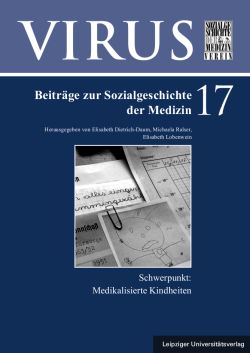
VIRUS Band 17, pp. 147-161, 2020/07/21
Schwerpunkt: Medikalisierte Kindheiten
Die neue Sorge um
das Kind vom ausgehenden 19. bis ins späte 20. Jahrhundert

In April 1953, after a fire, the public reformatory for school-age girls in Kramsach-Mariatal in Tyrol was completely reconstructed. Historical files having survived in the Tyrolean provincial archive document this. These sources demonstrate how the Innsbruck child psychiatrist Maria Vogl became involved in the architectural concept for the reconstruction. Among others,she delivered an expertise on how to reorganize the reformatory in order to achieve desirededucational effects. Specifically she gave her opinion on the idea that a bidet should beinstalled in a small room next to the children’s dormitories. While parts of the authorities did not support the construction, Vogl argued strongly for this installation. In doing so, she based her expert opinion on psychiatric and curative educational ideas. The expertise she wrote for this case shows how the medical discourse focussed not only on the children and their bodies but also on the whole building of the reformatory. In my paper I will first present Maria Vogl’s expert opinion and her spatial concept for reorganizing the reformatory. Second I will analyse the different discursive levels in Vogl’s argumentation. In a third step I will present a large-scale media campaign launched against the reformatory in Kramsach in the mid-1960s. The media articles demonstrate the high importance “space”, namely the buildings themselves, played in the debate about public youth residential care institutions. Finally I will use this case study to highlight the significance of spatial analysis for the research on the medicalization of childhood. My thesis is that the analysis of spatial concepts demonstrates the deep impact medicalization had on residential child and youth care.
Keywords: Space and education, residential child and youth care, architecture and topography of child and youth reformatories, materiality of educational processes, media, children psychiatrist Maria Nowak-Vogl (Innsbruck), Kramsach-Mariatal (Tyrol)